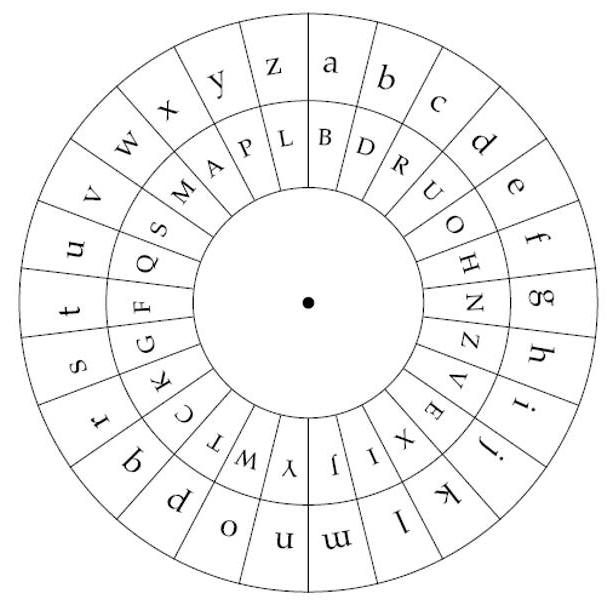Homework
4 (due 2/5)
CSC 233
We finished the affince cipher and then talked about several Renaissance systems including nomenclators, Alberti's cipher disk, and various ideas contained in Truthemius's Polygraphiae, in particular the influential tabula recta. We saw variants of that due to Porta and Belaso, and last saw Bacon's biliteral cipher.
Also mentioned in class:
- hashing and salting passwords
- most common passwords (if your's is on any of the lists, time to change)
- a beautifully colored version of Trithemius Polygraphia for sale
Next week, we will complete the history of Bacon's system, talk about the Vigenere cipher (covering the kappa test, counting coincidences) and the Playfair systems.
Submission:
The homework is due by midnight (I will not accept late homeworks). You can
submit your homework through d2l
into the drop-box for this homework. Please prepare your homework as a single file containing all answers
(e.g. doc, docx, or pdf,
not a zip file). For an example, see hwexample.docx
. How to take screenshots? Check out screenshots for
MAC,
Windows,
Linux.
1. (Reading) Read Section 3.2 (covering Alberti, Trithemius and Porta); if you want, go ahead, and check out Section 3.1 (on the Vigenere cipher); it's a combination of Alberti, Trithemius and Porta. Also, read Section 5.1 (on Bacon's Biliteral Cipher).
2. (Alberti Cipher disk, 15pt) For this problem, we are working with the modern version of Alberti's cipher disk we saw in class; it's pictured below, but for doing the problem, download the higher-quality version from d2l.

a) [5pt] You've intercepted the text xJPMbZQEBtRM which you suspect to have been encrypted with the cipher disk above (and using the index letter K on the inner disk). Decrypt.
b) [10pt] You have intercepted the ciphertext CKJJYMSYDDETYD again encrypted with our modernized Alberti disk. You do not know the key letter that was used for this piece of text (but apparently it didn't change through this piece of text). Decrypt and determine the key letter used (the letter aligned with the index letter K). Describe how you found the solution in detail.
3. (Tabula Recta, 8pt)
You have intercepted part of a ciphertext which was encrypted using the standard tabula recta on d2l) using it as a progressive cipher, that is, switching to the next row/alphabet after each step). You observed
"TYCCCTVJTVGA"
Since you don't know where the ciphertext started you can't be sure that the first letter was encoded with the A alphabet. Decode the message nevertheless. (You can try all 26 possibilities, or you can try some likely candidates first.) Include a desription of how you found the solution.
4. (Belaso's Cipher, 7pt) You see the ciphertext "CYLPNXG", and you know it's a place-name encrypted using Belaso's cipher. Your (lucky) guess is that the keyword used was "gio". Find the plaintext. Note: The substitution alphabets you need for this are on slide 13 of the Renaissance presentation.
5. (Bacon's Biliteral Cipher, 10pt) A picture is worth a thousand words. Actually, just one word. What is it? Include a detailed explanation of how you arrived at your answer (so just stating the answer will not earn full credit).

Hint: I used Bacon's alphabet as shown on the slides; you can also check out page 8 of Ciphers for the Little Folks. Hint 2: You don't know several things: where does it start? Which color is a and which color is b? Clockwise or anti-clockwise? Hint 3: clockwise.
Marcus Schaefer
Last updated: January 30th, 2020.